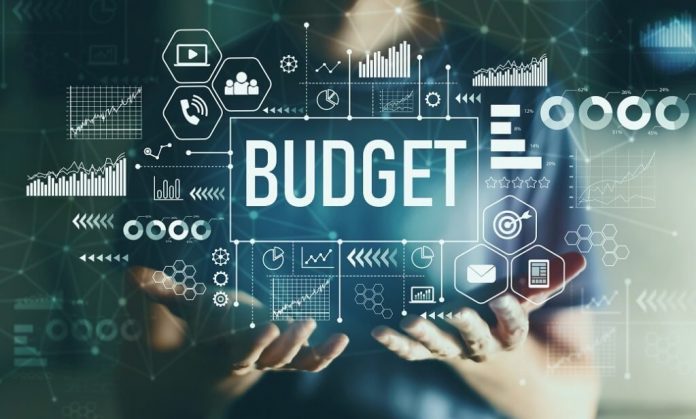This article is written by Saswata Tewari from the University of Petroleum and Energy Studies, Dehradun. This article talks about the main areas of the budgets of 2019-20 and 2021-22 and how they differ from one another.
Table of Contents
Introduction
If one has to assess the power of a nation, they should directly look into its financial budget. It is always the financials that speak about capability and not how many weapons one holds. One can always get the weapons if one possesses the right financials.
According to a report, India is the fastest-growing country with a growth rate of 12.6 % and has the power to reclaim the fastest growing country among the G20 countries in 2021-22. No doubt, this is possible only because of the righteous allocation of funds in its recent budgets.
The budgets of 2019-20 and 2021-22 are unique in their own way. The budget of 2019-20 was said to be the way for a 5 trillion economy for India and the budget of 2021-22 was the first-ever digital budget. This article describes the key areas of both budgets and talks about the main points of difference between both budgets.
Key points of the budget of 2019-20
Main highlights of the budget
- It was proposed by the government to spend Rs. 27,86,349 crores in 2019-20.
- The receipts were expected to increase by the percentage of 14.2 % to the amount of Rs. 20,82,589 crores as a result of the higher estimated revenues coming from corporation tax and dividends.
- A nominal GDP growth rate of 12% was assumed by the government in 2019-20.
- The revenue deficit was targeted at 2.3 % of GDP and the fiscal deficit was targeted at 3.3 % of GDP.
- The Ministry of Agriculture and Farmers’ Welfare had the highest percentage rise of 82.9% among the top 13 ministries with the highest allocations, followed by the Ministry of Petroleum and Natural Gas at 32.1% and the Ministry of Railways at 23.4 %.
Tax proposals
- The surcharge on the income tax for individuals earning between 2 crore rupees and five crore rupees, increased from 15 % to 25 % and for those individuals who earned over the amount of 5 crore rupees, it was increased to 27%.
- The threshold for paying 25% corporate tax with an annual turnover of the companies which was less than 250 crore had been increased to 400 crores.
- Cash withdrawals exceeding 1 crore rupees in a year, will be accompanied by a TDS of 2 % that will be levied by financial companies and post offices on their bank account holders.
- An additional tax deduction of up to Rs 1,50,000 will be provided on interest paid on loans for self-occupied house owners.
- Tax exemptions of up to Rs. 1,50,000 will be provided on the interest being paid on the loans relating to purchasing an electric vehicle.
- The Road and Infrastructure Cess have been increased by one rupee per litre on petrol and high-speed diesel. The excise duty on these items has also been increased by one rupee per litre.
- An increment was seen in the customs duty on gold and precious metals as the percentage was increased from 10% to 12.5%.
Highlights of the policies
Banking and finance
It was planned by the government to partly guarantee Public Sector Banks for the funds that are given in a pooled manner to NBFCs and an additional Rs. 70,000 crores will be given for the recapitalization of Public Sector Banks.
Government borrowings
The government had planned to change its existing borrowing programme by raising a part of its borrowings abroad in foreign currency. It was previously entirely funded by domestic borrowings.
Infrastructure
Over the next five years, the central government will spend Rs 100 lakh crore on infrastructure. Phase II of the Bharatmala project will begin with the construction of state highways. During the period 2018-30, public-private collaborations will be used to draw a total investment of Rs 50 lakh crore in railways. On the same lines as the One Nation–One Grid for electricity, a blueprint will be created for developing gas-grids, water-grids, i-ways (communication networks), and regional airports. Power sector structural changes (including tariffs) will be announced.
Industry
Minimum public shareholding in a company which was 25% previously, was increased to 35%. For the listing of social enterprises and voluntary organisations, a new electronic fundraising platform will be made. The current policy of the government owning 51% of non-financial PSUs would be changed to include government-controlled entities.
Investments
Allowance was given for 100% Foreign Direct Investment (FDI) in insurance intermediaries. Further, it was decided that the local sourcing rules will be relaxed for FDI in the single-brand retail sector. Relaxation of FDI rules in the aviation, media, and insurance sectors will also be investigated. The proposed 24 % statutory cap for foreign portfolio investment will be increased to sectoral limits. The overall allowable sectoral cap for a foreign shareholding in PSUs will be increased.
Agriculture and allied activities
It has been proposed by the government that the Pradhan Mantri Matsya Sampada Yojana will acknowledge the infrastructure gaps in the fisheries sector. Over 10,000 new Farmer Producer Organisations will be made in the next five years. Also, the government plans to work on the adoption of zero-budgeting farming.
Rural development
In the next five years, the Pradhan Mantri Gram Sadak Yojana will upgrade 1.25 lakh kilometres of the road for Rs 80,250 crore. Under the Scheme of Fund for Upgrading and Regeneration of Traditional Industries, 100 new clusters will be created (SFURTI). Under the Jal Jeevan Mission, all rural households will have access to piped water by 2024. The Swachh Bharat Mission will be extended to include solid waste management in all villages.
Social justice
Women who belong to self-help groups (SHGs) and have Jan-Dhan accounts will be given a Rs 5,000 overdraft. Also, under the MUDRA scheme, one woman from each SHG will receive a loan of up to one lakh rupees.
Social security
For traders and small shopkeepers with an annual turnover of less than Rs 1.5 crore, a new pension benefit scheme called Pradhan Mantri Karam Yogi Maandhan Scheme has been revealed.
Education
There will be an introduction to the current National Education Policy. The National Research Foundation will be established to encourage research funding and coordination across the country. To encourage international students to pursue higher education in India, a Study in India programme will be launched.
Legislative framework
A model tenancy law will be finalised and distributed to promote rental housing. The bill to create the Higher Education Commission of India will be introduced. Various labour laws would be consolidated into a collection of four labour codes.
Key points of the budget of 2021-22
Main highlights of the budget
- It has been proposed by the government to spend Rs. 34,83,236 crore in 2021-22.
- The receipts are 23% higher than the revised estimates of 2021-22. The amount is expected to be Rs. 19,76,424 crore.
- The nominal GDP is expected to heighten at 14.4 % in 2021-22.
- The revenue deficit is targeted at the percentage of 5.1 % and the fiscal deficit is targeted at 6.8% in 2021-22.
- The Ministry of Jal Shakti at 64% has the highest annual rise among the top 13 ministries with the highest allocations for 2019-20, followed by the Ministry of Consumer Affairs, Food and Public Distribution at 48% and the Ministry of Communications at 31%.
Tax proposals
- No changes were made in the income tax rates for individuals and corporations.
- The tax exemption on the interest income from workers’ provident fund contributions would be restricted to Rs 2.5 lakh.
- Tax benefits will be extended for another year until the end of the fiscal year 2021-22. This provides a tax deduction of up to Rs 1.5 lakh on interest on a home loan, as well as a tax holiday for affordable housing schemes, startup income, and capital gains invested in startups.
- Any imported products, such as gold, silver, alcoholic drinks, coal, and cotton, will be subject to an Agriculture and Infrastructure Development Cess, and basic customs duty will be reduced by the same amount. The cess will be imposed at Rs 2.5 and Rs 4 per litre on petrol and diesel, respectively, with excise duty reductions.
- The customs duty has been increased on certain items like cotton, silk, some auto and mobile parts.
- The safe harbour rate for real estate transactions above the circle rate has been raised from 10% to 20%. If the money is used to buy such items, the cashing out of a leave travel concession would be tax-free.
- The time restriction was reduced from 6 years to 3 years for the reopening of the income tax assessment.
- Businesses with a digital transaction volume of 95% or less and a turnover of less than five crore rupees are excluded from holding audited accounts. The limit will be raised to Rs. 10 crores.
Non-tax proposals
- Certain items are said to not meet the Money Bill definition.
- The LIC Act 1956 was amended to establish a board of directors, issue shares, reduce government shareholding to 51 % of equity (minimum 75 % in the first five years), and limit voting rights to non-central government shareholders to 5%.
- The Securities Contracts (Regulations) Act 1956 was amended to provide for the creation of a pooled investment fund that receives funds from investors. They can take out loans or sell debt securities. Amendments to the SARFAESI Act 2002 and the Recovery of Debts Owed to Banks and Financial Institutions Act 1993 as a result of the amendments.
- The SEBI Act 1992 was amended to enable Alternative Investment Trusts and Business Trusts to register.
Highlights of the policies
Legislative Changes
The SEBI Act 1992, as well as the Government Securities Act 2007, will be consolidated into a Securities Markets Code. The Insurance Act 1938 would be amended to increase the allowable foreign direct investment limits in insurance companies from 49 % to 74 %, as well as allow foreign ownership and control with safeguards. The Companies Act 2013 will be amended to update the concept of small businesses by raising the paid-up capital and annual turnover thresholds (from Rs 50 lakh to Rs 2 crore) (from Rs 2 crore to Rs 20 crore). The Limited Liability Partnership Act 2008 decriminalises several offences. The Deposit Insurance and Credit Guarantee Corporation Act 1961 will be amended to ensure that depositors have timely and convenient access to their funds to the degree that their insurance coverage allows. The SARFAESI Act, 2002’s minimum loan size for NBFCs to be qualified for debt recovery will be lowered from Rs 50 lakh to Rs 20 lakh.
Disinvestment
In 2021-22, the disinvestment of Air India, IDBI Bank, and Pawan Hans will be completed. Two public sector banks and a General Insurance corporation will be privatised by legislative amendments.LIC’s initial public offering (IPO) will be launched in 2021-22. The government has approved a strategic disinvestment strategy that will keep CPSEs in just four sectors while privatising the rest. States will be rewarded for divesting their public-sector holdings. To monetize government-owned property, a special purpose vehicle would be used.
Finance
To consolidate and take over existing stressed debt, as well as manage and dispose of assets, and Asset Reconstruction Company Limited and an Asset Management Company will be created. The corporate bond market will be given an institutional structure to instil trust among participants and increase secondary market liquidity. Financial investors will be required to sign an investor charter in all sectors.
Corporate affairs
Substitute procedures of debt resolution and exceptional frameworks for MSMEs will be introduced. Also, to provide for quick resolution of contractual disputes, a conciliation mechanism will be made.
Commerce and industry
Over seven textile parks will be made over the next three years to make infrastructure and enlarge exports. Regulatory reforms, such as the elimination of limits on paid-up capital and turnover, would promote the creation of one-person companies, and NRIs will be permitted to do so.
Labour and employment
A platform will be launched to collect information on gig workers, construction workers, and other unorganised workers to help frame health, housing, insurance, and other schemes for migrant unorganised workers. To improve apprenticeship opportunities, the Apprenticeship Act will be revised.
Health and nutrition
PM Atma Nirbhar Swasth Bharat Yojana will be launched to develop the capacity of health systems, strengthen national institutions, and create institutions to detect and cure new and emerging diseases. Mission Poshan 2.0 will be launched after merging the Supplementary Nutrition Programme and the Poshan Abhiyan to strengthen nutrition outcomes. The National Nursing and Midwifery Commission Bill will be introduced.
Education
Legislation to establish a Higher Education Commission of India, with vehicles for standard-setting, accreditation, regulation, and funding, will be implemented. A grant will be developed to create structured umbrella structures for institutes of higher education in nine cities. About 15,000 schools will be strengthened to include all elements of the National Education Policy, which will then mentor other schools to achieve policy ideals.
Infrastructure and real estate
A bill will be introduced to establish a Development Financial Institution for infrastructure financing. The DFI will be used to construct a lending portfolio for infrastructure projects worth at least five lakh crore rupees. There will be a start of a National Monetisation Pipeline of potential infrastructure assets, such as dedicated freight corridor assets of the railways. International portfolio investors will be able to fund real estate and infrastructure investment trusts with debt, making it easier for the infrastructure and real estate industries to obtain funding.
Transport
Economic corridors to augment road infrastructure is being planned in Tamil Nadu, Kerala, West Bengal, and Assam. A scheme to enable the private sector to finance, acquire, operate and maintain buses in public transport services will be launched. New technologies including MetroLite and MetroNeo will be used to develop metro rail systems in Tier-1 and Tier-2 cities. In the years 2021-22, seven major port ventures will be offered as public-private partnerships. A voluntary vehicle scrapping scheme was also declared to phase out old and unfit vehicles.
Energy
To resolve questions about profitability, a reform-based scheme to provide assistance to power distribution firms for infrastructure construction will be launched. Consumers will have a framework to choose from among distribution companies. The Ujjwala scheme will be expanded to include one crore more people. To coordinate the booking of common carrier capacity in all-natural gas pipelines, an independent gas transport system operator will be created. A Hydrogen Energy Mission will be launched to produce hydrogen from renewable energy sources.
Science and technology
A plan has been introduced to include financial rewards for using digital payment methods. The Deep Ocean Mission will be launched, which will include survey explorations and biodiversity conservation projects.
Water and sanitation
In urban areas, the Jal Jeevan Mission will be initiated to provide universal water supply and liquid waste management. Sludge and wastewater management will be a priority of the Urban Swachh Bharat Mission 2.0, as well as a reduction in single-use plastic and air pollution.
Agriculture and allied sectors
The new Operation Green Scheme will be expanded to include 22 perishable goods in addition to tomatoes, onions, and potatoes. APMCs will be able to use the Agriculture Infrastructure Fund to develop their infrastructure.
Social Justice
Margin money requirements under the Stand Up India scheme will be reduced from 25% to 15% to promote credit flow for SCs, STs, and women. In tribal areas, 750 Eklavya model residential schools will be established.
Main points of differences between both the budgets
Total expenditure
Between the budgets of 2019-20 and 2021-22, an annual increase of 14 % was noted. The revenue expenditure was estimated to be around Rs. 29,29,000 crore which was a 12% annual increase over 2019-20 and the capital expenditure was targeted at Rs. 5,54,236 crore which was a 29% annual increase over 2019-20.
Capital outlays accounted for 12% of the central government’s overall spending in 2019-20. In 2021-22, this is expected to rise to 15% of overall spending.
Total receipts
An annual increase of 6% was noted over 2019-20 in the government receipts, as the amount was estimated at Rs. 19,76,424 crore. The borrowings are estimated at a 27% annual increase at Rs. 15,06,812 crore over 2019-20.
Transfer to states
At an annual increase of 10 % over the budget of 2019-20, it was decided that the central government will transfer Rs. 13,88,502 to states and union territories in the budget of 2021-22. This includes the devolution of:
- Rs 6,65,563 crore from the centre’s share of taxes to states (an increase of 1%),
- Rs 7,22,939 crore in grants and loans to states (an increase of 21 %).
Although devolution to states was reduced by 30% in the revised stage (compared to budget estimates), grants were increased by 26%.
Deficits
In 2021-22, the revenue deficit is expected to be 5.1 % of GDP, while the fiscal deficit is expected to be 6.8 % of GDP. The primary deficit (i.e., the fiscal deficit minus interest payments) is set at 3.1 % of GDP. According to the updated forecast, the revenue deficit will be 7.5 % of GDP in 2020-21, and the fiscal deficit will be 9.5 % of GDP.
GDP growth estimate
In 2021-22, the nominal GDP is expected to rise at a rate of 14.4%. GDP growth was projected to be 10% in Budget 2020-21, but it was revised to -13 %.
Indirect taxes
The total indirect tax collections are estimated to be Rs 11,02,000 crore in 2021-22. Of this, the government has estimated to raise Rs 6,30,000 crore from GST. Out of the total tax collections under GST, 84% is expected to come from central GST (Rs 5,30,000 crore), and 16% (Rs 1,00,000 crore) from the GST compensation cess.
Union excise duties
Union excise duties are expected to bring in Rs 3,35,000 crore in revenue (an annual increase of 18 % over 2019-20). Thanks to revenue from duty on gasoline and diesel, the updated forecast for excise duties revenue in 2020-21 was 35 % higher than the budget estimate.
Income tax
In 2021-22, income tax collections are projected to increase by 7% annually to Rs 5,61,000 crore. The revised forecast for income tax revenue in 2020-21 was 28% lower than the budget estimate.
Disinvestment target
The goal for disinvestment in 2021-22 is Rs 1,75,000 crore.This goal is 3.5 times higher than the Rs 50,304 crore disinvestment plan for 2019-20.
Expenditure by ministries
In 2021-22, the 13 ministries with the largest allocations account for 53% of the overall budgeted spending. The Ministry of Defence, with a budget of Rs 4,78,196 crore in 2021-22, has the largest allocation (14 % of the total budgeted expenditure of the government). Consumer Affairs, Food and Public Distribution, Home Affairs, and Rural Development are among the other ministries with significant funding.
Expenditure on subsidies
The total subsidy expenditure in 2021-22 is expected to be Rs 3,69,899 crore, a 19 % rise over 2019-20. This is partially due to increased funding for food subsidies.
Schemes
- The MGNREGS, with a budget of Rs 73,000 crore in 2021-22, has the largest allocation of all the schemes. Throughout 2019-20, allocation to the scheme has increased by 1% annually. Following the announcement made under the Atma Nirbhar Bharat Economic Package in May 2020, allocation to the scheme has been increased by Rs 50,000 crore (81 %) from the budgeted stage to the revised stage in 2020-21.
- In 2021-22, the PM-KISAN scheme (income support to farmers) will receive the second-highest allocation of Rs 65,000 crore, representing a 16 % rise over 2019-20. The scheme’s allocation has been reduced by 13% in 2020-21, from Rs 75,000 crore in the budgeted stage to Rs 65,000 crore in the revised stage.
- Over the revised estimate for 2020-21, funding for the Jal Jeevan Mission (formerly known as the National Rural Drinking Water Mission) has increased by 355 % to Rs 50,011 crore.
- The Ministry of Finance has been given Rs 35,000 crore by the central government for COVID-19 vaccination in 2021-22. This sum has been set aside to assist states in meeting their COVID-19 vaccine costs.
Conclusion
Hence, for a country to grow and prosper, it is very significant for the leaders to decide how to allocate the funds in a manner that every growing aspect of the country gets satisfied.
To achieve accomplishments and to make its way into the top nations of the world, India has to make better changes every year in its union budget making sure that the budget is ticking all the boxes required for the development of the nation.
Recently, it was reported that China had allocated USD 200 billion to its defence budget which is said to be 3 times that of India’s. This is a concerning factor because of the tension both the country faced last year. The point here is, for India to prosper, it has to stay vigilant about all these pressure factors and make a budget accordingly to answer all these problems.
References
Students of LawSikho courses regularly produce writing assignments and work on practical exercises as a part of their coursework and develop themselves in real-life practical skills.
LawSikho has created a telegram group for exchanging legal knowledge, referrals, and various opportunities. You can click on this link and join:
 Serato DJ Crack 2025Serato DJ PRO Crack
Serato DJ Crack 2025Serato DJ PRO Crack










 Allow notifications
Allow notifications



